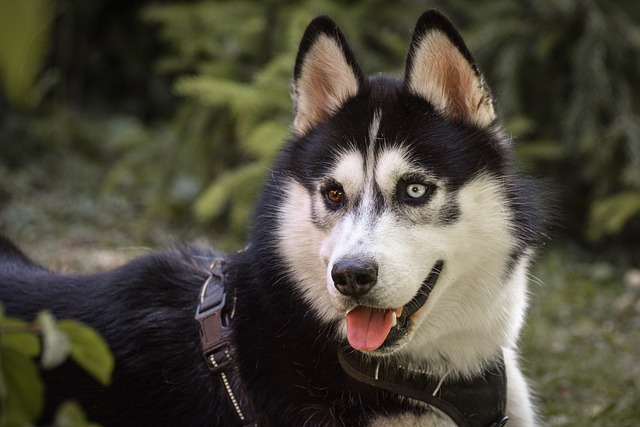
How do i train my dog to be obedient?
Watching your dog dart across the park ignoring your calls isn’t just frustrating—it can put them at risk near busy streets or public spaces.
Picture this: You’re out for a morning walk with your dog, and suddenly, they bare their teeth and lunge at a jogger. It’s a heart-stopping moment, and if you’ve been grappling with your dog’s aggression for months or even years, you might be asking yourself, “Is it too late to train my aggressive dog?” The short answer might surprise you—no, it’s never too late, but it does demand commitment, patience, and the right approach.
Let’s start with the legal side of things. Across many regions, having an aggressive dog comes with responsibilities. Rabies vaccinations are non-negotiable in places like California and various U.K. locales, enforced by strict laws. Additionally, leaving your dog’s waste unattended in public spaces can land you in hot water, with fines as hefty as £100 in some cities. Staying on top of these regulations not only keeps you out of trouble but also contributes to a safer community for everyone.
When it comes to training an aggressive dog, cultural norms around animal welfare play a significant role. Gone are the days of using harsh methods like yelling or physical punishment. In fact, such “dominance training” approaches are widely condemned. Instead, positive reinforcement is king. Take Mark, for example. His rescue mastiff, Bella, was terrified of other dogs and would often growl and bark on walks. Mark started rewarding Bella with her favorite chicken treats every time she remained calm in the presence of another dog. Over time, Bella’s reactions shifted from aggression to curiosity. This approach aligns with leading animal welfare organizations’ guidelines, proving that kindness and rewards are far more effective than fear tactics.
If you live in an apartment, training an aggressive dog comes with its own set of challenges. Limited space can amplify anxiety, making your dog more prone to outbursts. Creating a designated “safe space” for your pet, like a well-padded crate in a quiet corner of your apartment, can work wonders. Emily, an urban dog owner, transformed her tiny studio into a haven for her aggressive pug, Charlie. She filled Charlie’s crate with soft blankets and his favorite chew toy. Soon, Charlie started retreating to his crate when he felt overwhelmed, and his outbursts became less frequent. Pairing this with short, regular training sessions—about 10 minutes a few times a day—helps avoid overloading your dog in a confined area.

Community etiquette is crucial when you have an aggressive dog. Plan your walks during less busy times, like early dawn or late at night, to minimize encounters with other people and animals. If your dog shows signs of aggression during a walk, try the “watch” technique. Hold a treat near your eye and say “watch.” When your dog focuses on you instead of the trigger, reward them immediately. Just like how Laura in Seattle managed to walk her reactive border collie through the neighborhood without incidents, this simple method can make a world of difference.
Before diving into training, it’s essential to understand the root cause of your dog’s aggression. Is it fear, territorial behavior, or a past trauma? A visit to the vet can rule out any medical issues that might be contributing to the aggression. Then, consider enlisting the help of a certified professional dog trainer. Look for credentials like “CPDT-KA.” They can design a personalized training plan. For instance, a trainer helped Jake’s German shepherd, who was aggressive towards men wearing hats, by gradually exposing the dog to men with hats in a controlled environment, all while showering him with treats and praise.
Training an aggressive dog isn’t a sprint; it’s a marathon. It took Linda almost a year to help her Doberman, Duke, overcome his aggression towards children. But with consistent, positive training, Duke now happily wags his tail when kids visit. Remember, every small victory counts, whether it’s your dog ignoring a passing cyclist or staying calm during a brief encounter with another pet.
So, to answer the burning question: It’s never too late to train your aggressive dog. By following local laws, embracing positive reinforcement, and adapting to your living situation, you can help your furry friend become a calmer, happier member of your household and the community. With the right strategies and a whole lot of love, you and your dog can turn a new leaf.

Watching your dog dart across the park ignoring your calls isn’t just frustrating—it can put them at risk near busy streets or public spaces.

New puppy owners often find themselves rushing to clean up accidents before they set in, and that’s where puppy pad training becomes a game-changer.

If you've noticed your dog's waistline disappearing and your veterinarian has mentioned those few extra pounds, your first instinct might be to simply reduce the amount of food in their bowl.

Training a dog to use a designated spot indoors isn’t as daunting as many new owners fear, but it does take consistency and an understanding of your pet’s needs.

That moment of dread on a walk is all too familiar for many new dog owners. You see another dog approaching down the sidewalk of your neighborhood

If the sight of another dog on your neighborhood walk makes your heart sink as your own dog erupts into a frenzy of barking and lunging, you're not alone.